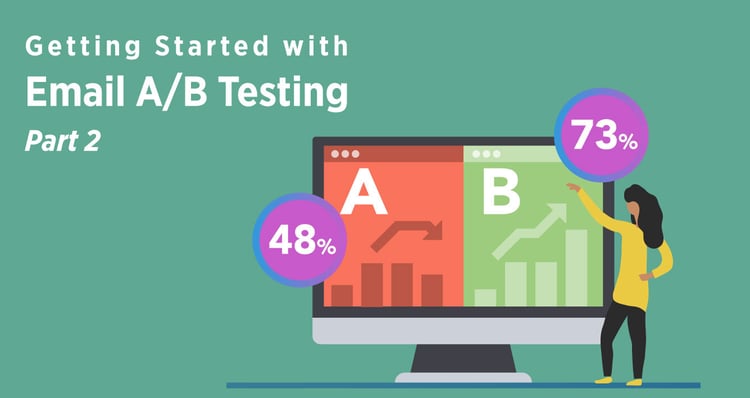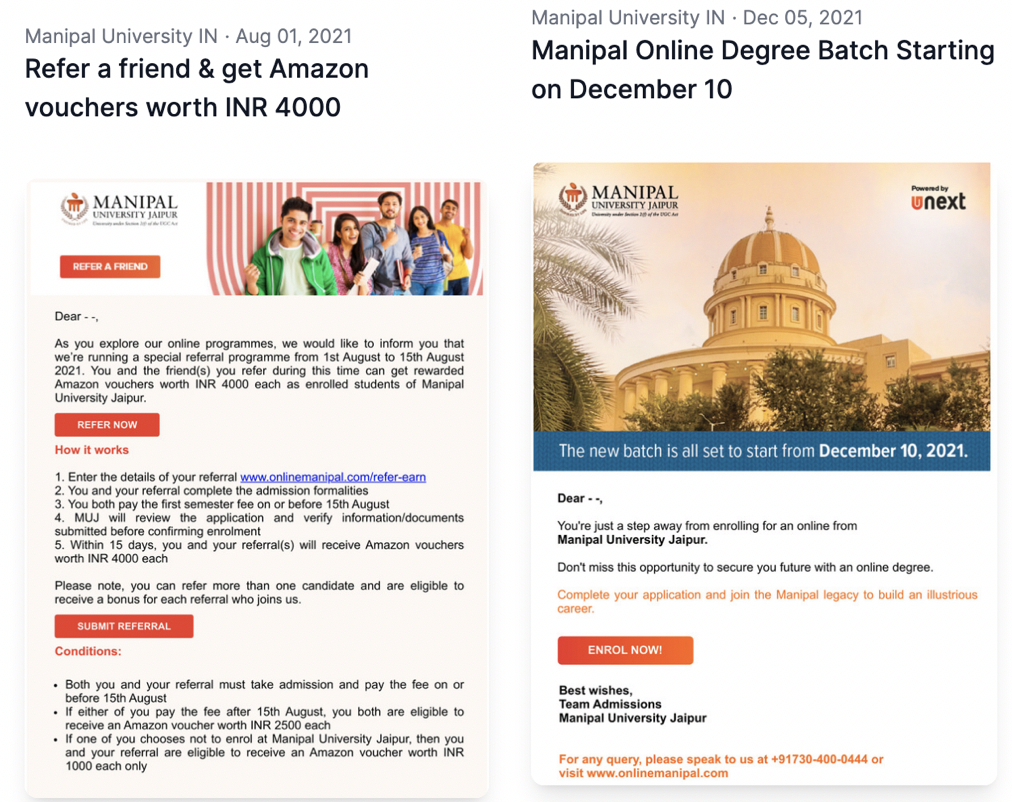
Email A/B testing tests exactly what again?
Last week we shared the 3 easy steps to the A/B testing process:
- Define what you want to optimize
- Develop a hypothesis
- Choose your sample size
If you didn’t catch that post, check it out here. It will be particularly helpful for those on your team who get into the weeds of your email campaigns. This is part 2 in our 2 part series.
Come with Questions. Leave with a Plan.
If you are attending the AIRC or ICEF Conferences - here is a huge plus opportunity.
The Intead/San Diego State University One-Day Workshop on December 13th will be a hands-on opportunity to learn from an awe-inspiring international student recruitment faculty.
- A full day of international student recruitment strategy and execution discussion
- Two luminary keynotes
- Luncheon on Social Justice with Dr. Jewell Winn and Dr. Adrienne Fusek
- Dinner on Chinese Student Influencers with Dr. Yingyi Ma and Brad Farnsworth
- At $200 for the day (inclusive of all meals), this learning opportunity is a steal. (Pricing goes up to $350 on October 24, 2022).
And for those of you going to NAFSA Region XI, be in touch so we can chat. 3 super Intead presentations coming your way during that event.
As we mentioned in last week's post, the creative art of email marketing has everything to do with knowing your audience and tapping into your recipient’s curiosity. Your recipient has to think there is something of value to them because of the sender or the content.
This week, we move on to the next important aspect of developing and tracking effective email campaigns: What to test.
In simple terms, the A/B testing process pits two slightly different versions (version A and version B) of an email against each other. Each is sent to a different sample group on your distribution list. The email with the best results wins and gets distributed to the remainder of your list. “Best results” has everything to do with what you want to prioritize (see last week’s post).
Almost any aspect of your email campaign can be tested: copy, design, timing. But, how do you actually decide what to test? Read on to learn which aspects of an email campaign we find most helpful to analyze to achieve the results that really matter. We typically find subject lines, preview text, multimedia, and calls to action to be the most helpful elements to test in an email marketing push. Though it may feel intuitive enough, let’s take a closer look at the various aspects you can tweak, and how to do so.
You had me at hello. Subject lines matter
Subject lines have everything to do with whether students open your emails or hit delete. In fact, 67% of recipients decide whether to open an email based on the subject line alone.

There are various ways to approach the subject line, playing with questions, emojis, personalization, urgency.
- Questions help capture attention and encourage readers to seek an answer. A simple testing example: “Get your enrollment questions answered.” vs “Have enrollment questions? We have answers.”
- Emojis are eye-catching and playful. Test whether subject lines with emojis outperform those without, and where in the subject line you place them (e.g. in the beginning, middle, or end). This goes without saying but be conscious of which emojis you use so they aren’t construed inappropriately – different cultures and all that.
- Personalizing subject lines using dynamic tags within your platforms makes it easy to speak directly to the recipient from the get-go. One study back in 2017 found that personalized subject lines had 50% more opens than non-personalized subject lines, but you may want to test across regions and email lists to see if one group prefers personalization over another. At one point it was a novel approach. It no longer is.
- Urgency can spur students into action and is a great tone for time-sensitive emails urging applications and event registrations. One word of caution: it’s easy to sound “spammy” with urgent language, so test this carefully and don’t overuse.
Subtitle and sender: more subtle than the subject, but malleable too
If the email subject line is the title, the preview text is the subtitle. Because it’s visible in your recipients’ inbox it definitely contributes to your recipients’ decision to open or ignore your email. So, make it count!
Don’t use your preview text to parrot information from your subject line; instead, see it as a continuation of the subject line. The two should work in conjunction to pique curiosity, create urgency, and provide information. Test various combinations to see which preview text wins the highest open rates.
Similarly, you can play with the sender name. It’s not quite as meaningful a change, but you definitely want the email coming from the right person or place. If testing this, we recommend testing a personalized sender name “Ben Waxman” vs. institution “Intead.”
Boosting open rates with videos, and other multimedia tricks
Studies show that adding videos to your emails can increase open rates. No video? Then try a animated GIF or even a static image. These visual elements capture your readers’ attention and can drive more clicks when used with appropriate content. Truth is, a simple text email can also be highly valuable depending on what you are trying to convey.
In your A/B test, you can play with:
- One vs. multiple images
- Embedded video vs. screenshot of a video with link
- Animated GIF vs. a static image
- Text on image vs. no text
- Stock imagery vs. photos of real faculty, students, research, campus
- Image with people vs. graphics
It’s all about your CTA
Whereas your subject line and subtitle are how you draw readers into your email, your call to action (CTA) is how you get them to do what you want. Download Your Viewbook. Schedule a Call. Register for Our Webinar. Be in Touch. Apply Now. (That last one is used far too often, by the way – you need to build a relationship before anyone will take your “apply now” button seriously).
Like the other email components, you can test a variety of CTA scenarios: color, copy, location, placement.
- For the CTA color, we generally recommend using hues that contrast with the rest of the email.
- CTA copy should be tested as well: “Download” vs “Click Here” – as well as text size, all-caps, and colors.
- CTA placement is also critical. It needs to be readily visible. Try it above the fold, within the header, or over an image. Maybe, it needs to be repeated throughout the email (see example on left) vs. standalone (see example on right). You won’t know unless you test.

The bottom line: While testing emails takes time, it’s too simple and effective not to do. And, if you were to speak with our digital lead, she would tell you, “If you have the time and resources, test it all.” But she is such a numbers nerd ; -) That aside, if you would like to speak about A/B email testing or digital campaigns in general, be in touch.



